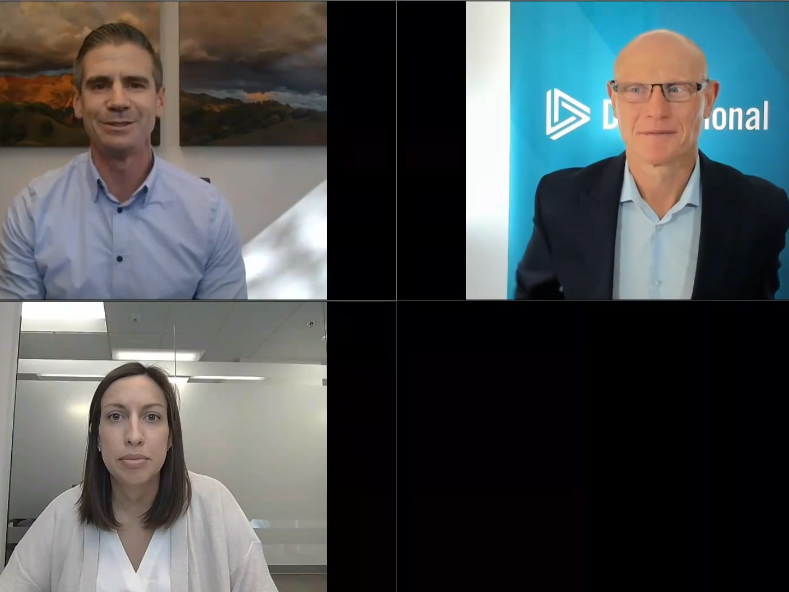By Kelly Metzler, CFP®
Employee Stock Purchase Plans (ESPP) are one of the less talked about types of equity compensation. However, if available to you, it can be a beneficial tool to incorporate into your overall financial plan. ESPPs offer a disciplined savings plan and way to build up your after-tax investments, though it is not without some risk. Understanding how these plans work and what factors you should consider before deciding whether to participate will help executives maximize this employer benefit.
What is an Employee Stock Purchase Plan (ESPP)?
An Employee Stock Purchase Plan (ESPP) is a benefit program offered by some companies that allows employees to purchase company stock often at a discounted price. This discount typically ranges from 5% to 15% off the fair market value.
ESPPs can be either qualified or non-qualified. Qualified plans have certain tax advantages, while non-qualified plans do not.
How do ESPPs Work?
Under an ESPP, employees elect a percentage of their compensation to buy company stock. For most plans you can contribute 1% to 15% of your salary, up to the IRS limit of $25,000 per year.
Your contributions to the ESPP are made through payroll deductions over a certain offering period, often 6 months. Over this offering period, the money withheld from your paychecks accumulates, and then at the end of the period is used to purchase company stock. These stock purchases are made with after-tax dollars.
Employee Stock Purchase Plan Benefits
Discounted Stock Price: ESPPs typically offer a discount on the purchase of company stock, allowing you to buy shares at a lower price than if you were to just buy shares in the open market. This discount can be up to 15% off the market price.
ESPP Lookback Provision: Many ESPP plans include a lookback provision, which is an attractive feature that looks at the price of the stock at the beginning of the offering period and at the end of the offering period (also the purchase date) and lets you buy the stock at a discount to the lower of these two prices.
Here’s how it works: Let’s say your ESPP plan has a 15% discount and a six-month offering period. The stock price at the beginning of the offering period is $100 and increases to $110 at the end of the offering period 6 months later. If your plan includes a lookback feature, you would be able to purchase the stock at a 15% discount to the lower of these two prices ($100) and buy the stock at $85 per share. If you were to sell these shares immediately after purchase, you would sell them at the fair market value of $110.
If instead, the stock price had fallen from $100 to $90 at the end of the offering period, you would be able to buy the stock at a 15% discount to $90, or $76.50 per share. But the shares would still be worth $90.
Regular savings: Participating in an ESPP plan can be a good way to build your after-tax investment assets. Unlike retirement accounts, an ESPP plan does not have restrictions around when you are able to withdraw from the account, although some executives may have trading restrictions or blackout periods for when they are allowed to sell company stock.
Since an ESPP usually involves regular contributions from your paycheck, it can encourage a regular savings habit and make saving automatic. Like investing into a 401(k) with every paycheck, you’ll also be dollar-cost-averaging into your company stock.

How is Stock Purchased Through an ESPP Taxed?
For qualified ESPP plans, you are not taxed when you acquire the stock, only when you sell. How you are taxed upon the sale is based on you long you hold the stock.
Qualifying Disposition: If you hold shares for at least two years after your company granted the option (generally the beginning of the offering period) and one year after the purchase date, it is considered a “qualifying disposition.” Some of your profit would be taxed as ordinary income and some as favorable long-term capital gains treatment. You would report ordinary income on the lesser of:
- The amount of your profit
- The difference between the stock price at the beginning of the offering period and the option price as of the beginning of the offering period.
Disqualifying Disposition: If you do not satisfy the special holding period of two years from grant date and one year from purchase date, it is a “disqualifying disposition.” In that case, you will recognize ordinary income equal to the difference between the fair market value of the stock on the purchase date and what you paid for it. If your profit on the sale is larger than the amount of ordinary income you reported, you’ll report a capital gain in addition.
For a nonqualified ESPP plan, if you buy stock at a discount, the discount is taxed as ordinary income and owed on the purchase. When you sell the shares, you’ll report short-term or long-term capital gains depending on how long you held the shares.
Strategies for Buying and Selling ESPPs
If your company’s ESPP plan offers a discount and/or a lookback feature, you’ll be able to purchase company stock at a lower price than if you were to just buy shares in a brokerage account on your own. However, keep in mind when buying any stock, there is the risk that the stock price could decline after you buy it.
Buying shares at a discount and selling them as soon as you acquire them is one way to lock in a gain without taking on single-stock risk. If your ESPP plan offered a 15% discount, you could essentially earn a guaranteed 17.6% return. For example, say that the stock is trading at $100 per share, and you are able to buy it for $85 per share. If you sell that stock right away, you’ll earn a $15 profit on your $85 investment – a 17.6% return. The return can be even higher if the plan has a lookback period, and the stock price goes up during the offering period.
For executives and other employees subject to trading restrictions or blackout periods, be sure to understand how your open trading windows align with your plan’s offering periods.
If you decide to hold the shares long enough to satisfy the holding period for a “qualifying disposition”, understand the investment risk that you are taking. While capital gains tax treatment is more favorable than recognizing ordinary income, if the stock price goes down while you’re holding onto your shares, it can more than offset any tax savings.
How Much Should I Contribute to my ESPP?
How much to contribute to an ESPP will depend on your own financial situation as well as the details of your ESPP plan. Since contributions are made from your paycheck, you’ll need to make sure your cash flow can accommodate the reduction in take-home pay.
The greater the discount your plan offers, as well as if there is a lookback, can translate to a higher return and may be an incentive to contribute more to the ESPP.
If you already own a significant amount of company stock and your ESPP plan or employer has restrictions on when you can sell your ESPP shares, this should also be taken into consideration since you may not be able to sell the shares immediately after they’re purchased.
Single Stock Concentration Risk
Buying company stock through an ESPP plan without selling can lead to single stock concentration risk. You should also be aware of company stock exposure you have through other types of equity compensation like Restricted Stock Units (RSUs) or stock options.
Investing a large portion of your wealth in a single stock can be risky. If the stock price declines, your portfolio value could decrease significantly. It’s important to consider your overall investment portfolio and diversify your holdings to manage risk.
Conclusion
ESPPs that allow you to buy company stock at a discount can be a valuable employer benefit. However, you should understand how these plans work, as well as the benefits and potential risks before you decide to participate. As a financial advisor, I have helped executives incorporate ESPP participation into their financial plan and make sure they’re making the most of this benefit. If you’re ready to optimize your compensation and benefits, schedule a call.




